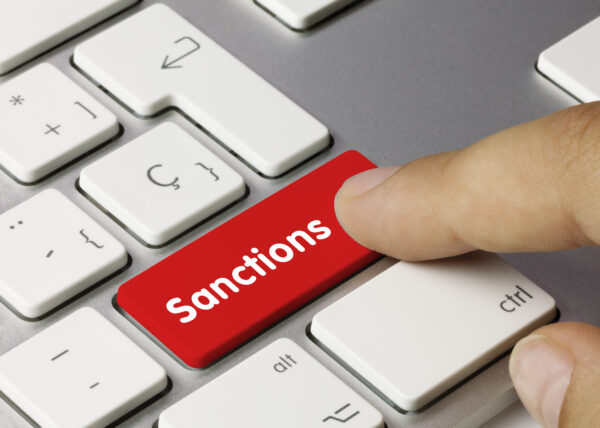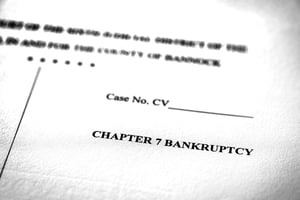Sanctions Imperative When False Statements are the Basis for a Lawsuit
“When outrageous, false statements are made that force innocent defendants to spend many hundreds of thousands of dollars to litigate and prove them false, there must be severe sanctions.”
For better or worse, anyone can be sued for any reason—even reasons that are completely fictitious and based on allegations that are entirely false.
Several cases have recently caused me to ask a simple question: Can something actually be evidence if it is false? I’ve had a few people respond, some thoughtful and others intentionally dense. “Of course, something that is false is evidence,” one person recently told me. “It is up to the trier of fact to determine what is false, and that which is false is clearly evidence to be considered.”
Because You Can Doesn’t Mean You Should
I chastised the self-proclaimed litigator who claimed more than a generation of experience for telling me what is false is evidence, responding that I hoped he hadn’t taught any law students or new attorneys that submitting false statements and making false allegations in a verified complaint is anything other than unethical and entirely inappropriate.
What is clear to me is there is a belief on the part of some that you can say anything in a complaint regardless of falsity, and regardless of whether there is anything objective to back up the statement. After all, at the motion to dismiss stage in a litigation everything that is stated by the plaintiff, no matter how absurd, no matter how outrageous, no matter how false, must be taken as true. And given judicial inefficiency and legal standards, the truth won’t matter until late in the litigation after the defendant has already spent a lot of money. That is why nuisance lawsuits thrive—there is little or no risk to those willing to say anything.
There is obviously a difference between getting something wrong and making a knowing, intentional false statement in a verified complaint. And there is a difference between recklessly making a statement without any proof or reason to believe it is true and the evidence ultimately not materializing to support the wild accusation. But when outrageous, false statements are made that force innocent defendants to spend many hundreds of thousands of dollars to litigate and prove them false, there must be severe sanctions.
An Egregious Example
A case in point is Slingshot Technologies, LLC v. Acacia Research Corp. et al, in the Court of Chancery of the State of Delaware. Defendant Transpacific IP Group LTD. was forced to litigate for four years to demonstrate what was easily provable as false, and ultimately the claims against them were thrown out. Now they are asking for their attorney’s fees and costs for fighting what they characterize as a “shakedown”.
In a nutshell, Slingshot became interested in acquiring a patent portfolio from Transpacific and entered into a fairly standard agreement giving them an option to purchase the portfolio. Slingshot was never able to generate the funding necessary to purchase the portfolio, but in what can only be described as extreme good faith, Transpacific granted extension after extension after extension. Ultimately realizing that Slingshot was never going to purchase the portfolio, Transpacific moved on to find another buyer, which became the subject of an ill-fated lawsuit based on multiple false allegations.
Fast forward and the Delaware Court found, in a Summary Judgment decision, that no facts supported Slingshot’s allegations and finally let Transpacific out of the case, reasoning that all the evidence showed was that after the Slingshot deal failed to take place, Transpacific became a motivated seller and eventually sold the portfolio to Acacia.
Unfortunately, that simple summary is what took four years and hundreds of thousands of dollars to defend against, even though it was premised on a series of fabricated allegations.
The predicate for the Slingshot claim related to a non-circumvention clause, whereby Transpacific agreed not to sell the portfolio for one year to any funder that Slingshot introduced to Transpacific. To keep the lawsuit alive, all Slingshot had to do was plead that the ultimate sale went to an introduced funding source, even if that never actually occurred. Nevertheless, Slingshot argued until the bitter end that Transpacific breached the non-circumvention clause, which they claimed justified the lawsuit against Acacia, Transpacific, and Katharine Wolanyk, personally.
Wolanyk is with Burford Capital, which was one of numerous parties that Slingshot was trying to entice to pay for their purchase of the portfolio in question, but Burford declined for reasons that are explained but redacted in the public version of available pleadings. However, what we do know for certain is the evidence showed that Slingshot never introduced Burford to Transpacific or even told Transpacific that they approached Burford—who Transpacific already had a longstanding business relationship with. The evidence also showed that, except for being copied on emails, Wolanyk had nothing to do with the potential deal between Slingshot and Burford. It wasn’t her job or role with Burford to be involved.
The claim against all the defendants allegedly arose when Wolanyk joined the Acacia board. To Slingshot this was an actionable grievance because Slingshot falsely pleaded that they introduced Burford and Wolanyk to Transpacific, which, based on the Slingshot theory, meant that they had indirectly introduced Transpacific to Acacia after Wolanyk joined the Acacia board. So, Slingshot argued that Transpacific sold the portfolio to a funder that was introduced to them, violating the one-year waiting period in the agreement.
It is tragic that this matter took four years to resolve when it should have taken four minutes.
Can you be introduced to someone you already know? Of course not, both logically and legally. The Delaware Court correctly determined that Transpacific would never have agreed to a clause that required them to not sell the portfolio for one year to anyone, and that clause was simply to prevent Slingshot from being cut out if an introduction were actually made to a buyer unknown to Transpacific.
The testimony, after full and complete discovery, showed that Transpacific had longstanding relationships with both Burford and Acacia. And I can tell readers with 100% certainty that officers of Transpacific not only knew Wolanyk before this fiasco but knew her very well and had been discussing business opportunities before Slingshot ever came into the picture. I can say this with such certainty because I know those involved, and I vividly remember conversations between those involved at one particular industry conference before the Slingshot option was ever signed.
So, Slingshot didn’t introduce Wolanyk, Burford, or Acacia to Transpacific. But, to prove the outrageous nature and falsity of the allegations, Transpacific needed to endure four years of litigation and a lot of costly discovery while Slingshot chased a payday. And because of the procedural posture of the case, where what a plaintiff says is treated as absolute truth, the falsity of the allegations didn’t matter until after discovery.
Sanctions Should Be Issued
It is expensive and costs a lot of money to prove you didn’t do something, or that something never happened, which is precisely why in criminal proceedings defendants are presumed innocent. The exact opposite is true in civil litigation, where up until the very end the defendant is presumed to have done everything the plaintiff alleges, and all inferences are construed against the defendant, no matter how ridiculous, absurd or untrue.
Perhaps for the American system of justice to afford those legitimately aggrieved their day in court the process must operate to believe everything in a verified complaint is true—after all it is sworn to be true. But when a plaintiff makes false allegations and fails to voluntarily dismiss the case, the American system of justice ought to issue severe sanctions to punish the “I’ll say anything” plaintiff who misuses the rules and relies on judicial inefficiencies to compel a settlement.
Image Source: Deposit Photos
Author: Momius
Image ID: 388580038






